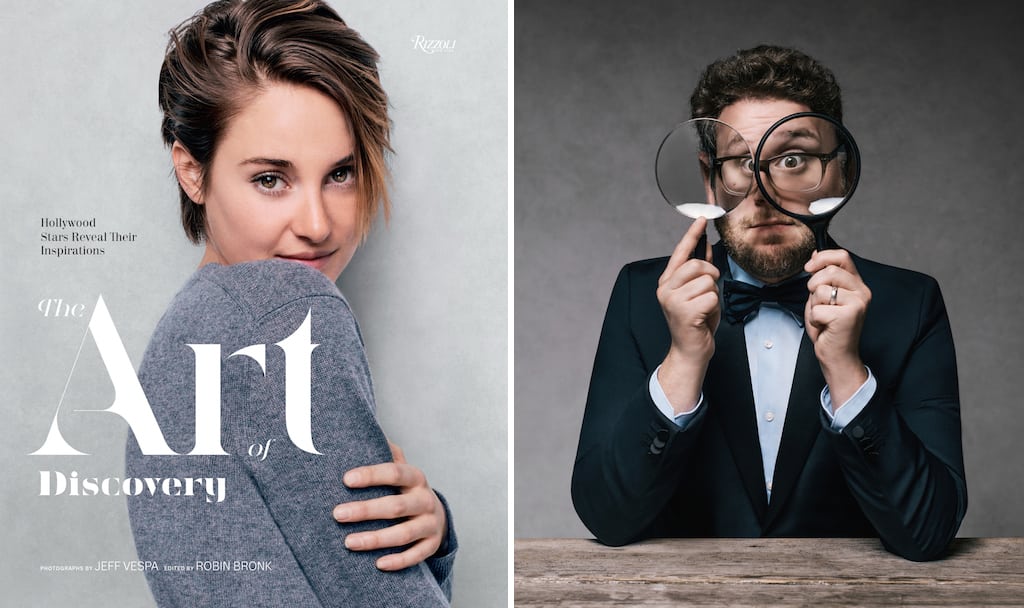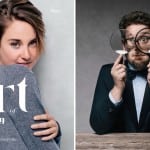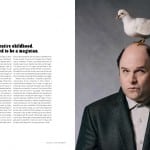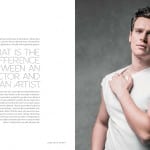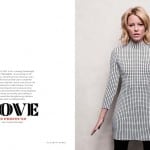Skift Take
The sumptuous artistry of the new book and its message of artistic inspiration help position the Renaissance brand as an insightful, like-minded host for creative professionals.
- Left: Shailene Woodley; right: Seth Rogan
- Jason Alexander
- Jonathan Groff
- Elizabeth Banks
- Joseph Gordon Levitt
- Rosario Dawson
- Jared Leto
A new photography book called The Art of Discovery, sponsored by Renaissance Hotels and produced by The Creative Coalition, launches today at Renaissance properties worldwide.
The theme of the book centers on 100 artists and celebrities who share moments of reflection describing pivotal moments in their lives that helped shape their careers. For Renaissance, those inspirational thoughts of discovery align with the hotel brand’s central market positioning: “Welcome to a World of Discoveries.”
The Creative Coalition, founded almost 30 years ago by a group of actors including Alec Baldwin and Susan Sarandon, leverages the influence of the entertainment industry to promote social welfare and arts education in the United States.
“What better way to help ensure that the arts flourish in America than to profile 100 success stories in the arts,” says Robin Bronk, CEO of The Creative Coalition and editor of the new book. “The interesting thing when you read these windows into the artist’s soul, if you will, you see that so many started from modest means. They had a dream, they had the will, and their love for the arts changed the course of their lives.”
Two things immediately stand out when you first open the pages. The first is the overall quietude and stillness of the art direction. The color palette is subdued, almost monochromatic, throughout the exclusive photography produced by Jeff Vespa. Each spread has a photo of the artist on the right and their words on the left, surrounded by voluminous empty white space.
The goal is to stop the reader in the moment, while suppressing the infinite amount of immediate digital distractions, in order to reflect on their relationship with the artists’ thoughts and meaning.
Elizabeth Banks, for example, describes the night she met the father of her children. Jared Leto shares how he moved to California to pursue a film career with almost no money in his pocket. Shailene Woodley, who graces the book’s cover, explains how dancing helped her stave off insecurities about her body.
“Technology has gone from what should have made our life easier to something where we are constantly multitasking, and where we’ve gotten ourselves into this kind of frenzy,” says Tina Edmundson, Marriott’s global brand officer for luxury and lifestyle hotels. “The Art of Discovery is very calming, and put me in a sort of reflective place. It makes you stop and think and turn the pages slowly because you’re trying to take in the essence of what you’re reading.”
Reviving Renaissance
The Renaissance Hotels’ development pipeline is ramping up with nine new properties opening this year in places like Paris, Provence, Santiago, Beijing and other cultural hotspots, so there’s a concerted push to elevate the brand discussion around “discovery.”
Edmundson explains that the theme is driven by two integrated platforms, including the Navigator staff (she calls them “souped-up concierges”) who are well acclimated to the local scene, both high- and low-brow, in their respective destinations.
The second mechanism activating the discovery messaging is RLifeLIVE, which promotes and provides a stage for local artists, musicians, mixologists, academics and other cultural influencers inside the hotels.
The Art of Discovery is part of that program. To begin, prints from the book will be displayed in a dozen or so hotels as a gallery installation, with the potential to scale depending on popularity. And in terms of content marketing, the editorial and photography content morphs beautifully on all kinds of mediums and platforms.
“Everything we do for the brand is about discovery, so this book and what The Creative Coalition is doing really fits very, very nicely with Renaissance Hotels,” says Edmundson. “The Renaissance target customer is what we call the “Discoverer,” who uses travel as inspiration. They see travel as a beautiful thing even though they’re traveling on business. They want to take a moment to enjoy the neighborhood. They want to see, touch, feel, sip and savor new things, and they take this opportunity to fill in their personal ambitions and desires to discover new things. The brand is actually tailored around curating these moments for them.”
We asked Edmundson which artist in the book spoke to her the most. That’s the beauty of this enterprise. Everyone will find a kindred soul among the 100 artists.
“Kurt Russell was talking about his new baby, and it just felt real,” she answered. “It resonated with me personally. I have one child who is now 13 and it sort of took me back. Many of the selections are deeply personal. There is nothing I read that I already knew, which was really interesting, right? Too often you read things, particularly about celebrities, that you’ve heard before, but because these stories are so personal, I think they will resonate with the public quite well.”
The Creative Coalition Mission
Bronk says she tried to “look under the kimono” of the artists throughout the production of the book to deliver a sense of discovery. She says each celebrity was placed in a chronological order to create a beginning, middle and end where the story arc takes the reader through a range of emotions.
“The most thrilling thing when a reader glances at the book, they sort of flip through and absorb the artistry of it, and then they’ll get lost in the story of it because there’s so many levels of looking at the book,” says Bronk. “The book itself is a piece of art.”
This is the third book curated by The Creative Coalition, and the purpose of each one is designed to further the message that arts education has a very real, tangible and measurable impact on society for people of all ages.
By using Renaissance Hotels as a delivery system for that message, Bronk and her team are introducing their mission to a like-minded audience of hotel guests who view themselves as part of the Creative Class. They’re also often in the ascendancy phases of their careers, seeking a larger grasp of the world around them through culture, and how their personal creative skills can further their professional lives.
“Art is how we learn to be strategic, analytical, thoughtful and better at creative problem solving, which is why it’s such a conundrum that the arts would become a political football in the last couple decades,” asserts Bronk. “We live in a society where the data is overwhelming that an investment in the arts is an investment in a citizen’s future.”
Bronk rattled off a list of artists that inspired her personally. She loved Jason Alexander’s story about wanting to be a magician, but he knew his hands weren’t dexterous enough. However, when his grandparents took him to see a Broadway show, he realized he could create magic through acting.
She summed up: “Readers should be able to identify with these luminaries because there’s that kernel of the arts in everyone, and we talk about how that very stripped down, naked kernel is the essence of each person’s story, and how the arts is not necessarily this lofty concept.”
We asked what Bronk envisions as the end takeaway for the book’s message.
“We want readers to be reflective on their own lives and community,” she said. “We hope that in the end people will see how a spark of the arts ignited a bonfire in these 100 subjects, and we hope that everyone can find their own spark. We also hope people look to their own communities and see art education as a viable investment in those communities moving into the future.”
Greg Oates covers hospitality and tourism development / email: [email protected]
Have a confidential tip for Skift? Get in touch
